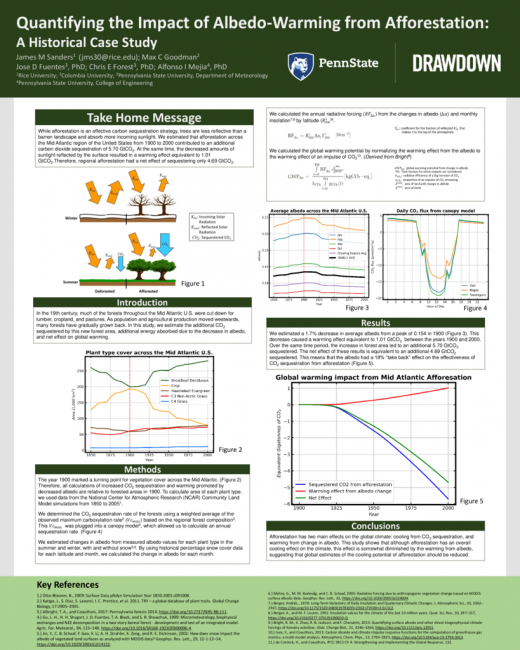Recent IPCC analysis has demonstrated the necessity of large-scale carbon sequestration as a supplement to emissions reductions if global warming is to remain below 1.5 degrees Celsius. While afforestation is a cost-effective carbon sequestration strategy, the change in surface cover also reduces the Earth’s overall albedo (reflectivity). A lower albedo reflects less solar radiation back into space, leading to a warming effect that can offset some or all of the cooling from CO2 sequestration. Project Drawdown’s methodology does not yet account for these albedo effects, and therefore runs the risk of significantly overestimating the global cooling potential of afforestation. This study looks at the mid-Atlantic region of the US in order to analyze these albedo warming effects. Up through the late 19 th century, much of the forests throughout this region were cut down for their wood and to make space for crops; however, the region has since experienced significant forest regrowth. This study uses historical surface data in order to look at yearly percentages of different types of vegetation cover, allowing us to estimate the change in albedo from these regrown forests. Then, we use a forest canopy model to simulate the specific variety of trees within these new forests in order to get a yearly CO2 sequestration rate. Finally, we convert the change in albedo to an equivalent CO2 forcing. This allows us to compare the net effective carbon drawdown from the afforestation in the Mid-Atlantic by subtracting the overall warming effect of albedo from the cooling effect of CO2 sequestration. By showing how the cooling effect from afforestation can be substantially reduced, this analysis highlights the importance of consideration of albedo warming effects when implementing afforestation projects in order to reduce global warming.
Day
Monday Poster Session
Related Conference Themes
Built Environment
Land Use


